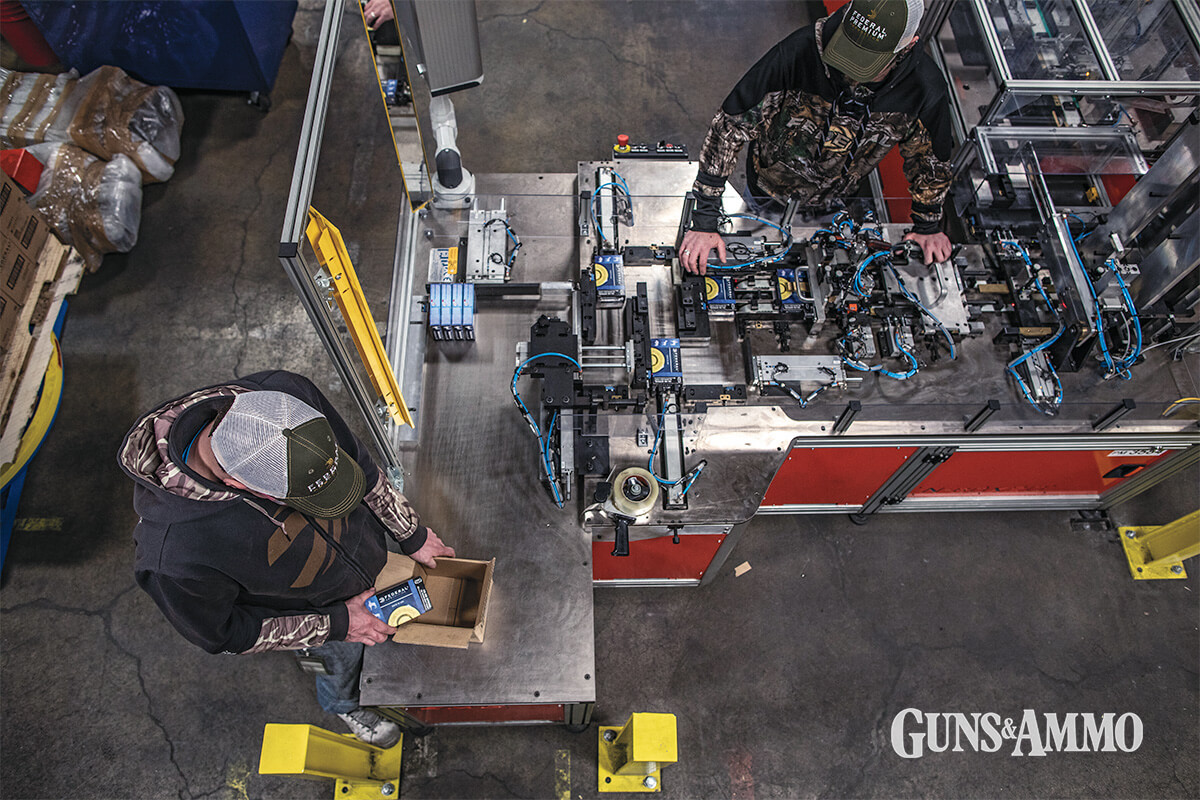There are many conspiracy theories about ammunition shortages, but what’s really happening?

Standing in a warehouse, I was looking at 2½-million rounds of 5.56 NATO. Unfortunately, none of it was for the commercial market; those stacks of banded wooden crates were headed to U.S. Special Operations. The ammunition company I was visiting requested anonymity. Despite having drums of powder and a quantity of primers, none of it could be used to manufacture commercial ammunition. Those components were U.S. government property.
Due to the military’s order, no employees had been laid off or shifts canceled as a result of the shortages resulting from the COVID-19 pandemic. Like a lot of ammunition brands, however, this company outsources components. They had plenty of projectiles and cases to resume commercial production, but were waiting on powder and primers. The military’s ability to supply its own components meant that this company continued to operate.
Since the pandemic began, the market has demanded 14 billion rounds of ammunition. The National Shooting Sports Foundation (NSSF) estimated that typically 12 billion rounds are sold annually. Increasing production to match such increased demand is difficult. Even if a manufacturer acquires more machines and hires additional staff, most ammo makers are dependent on outsourced components such as gunpowder and primers. As reloaders have experienced, gunpowder and primers can be difficult to obtain and command three times the money. CCI, Federal, Remington and Winchester are the four major producers of primers in the U.S. Since a 2019 acquisition, Vista now owns three of those brands: CCI, Federal and Remington. Alliant Powder (also owned by Vista Outdoor), Hodgdon and Winchester are the primary distributors of St. Marks’ domestic-made gunpowder. The defense contractor General Dynamics owns St. Marks commercial Ball Powder plant in Florida, while BAE Systems is contracted with the U.S. military to operate the Radford Arsenal plant in Virginia. Winchester operates Lake City in Missouri.

Who is controlling ammunition prices? We do. The NSSF estimates that 8.4 million first-time gun owners joined our ranks in 2020, and nearly 4 million more in 2021. The FBI reported more than 12 million background checks in the first quarter of 2021 alone, which doesn’t account for multiple gun sales. There were already an estimated 50 million active participants in the U.S., which means that number is now higher than 62 million active gun owners. If every one of those new shooters bought just 50 rounds of ammunition for one new gun, the increased demand amounts to 420 million rounds.
There was also some hoarding and a lot of panic buying. Some were caught unprepared and became anxious about the Biden administration’s threat to increase gun control amid the televised social unrest. Combine fear with a scarcity mentality, and the result is a spike in demand. Did you ever enter a gun store and only see a few boxes on the shelf? Did you purchase a box or two just in case?
There have been many theories for the shortage: Ammo companies prioritize military sales over civilian sales. This is somewhat true, but ammunition made for the military is spec’d and manufactured separately from commercial ammo.
The government is buying ammunition as a form of gun control to prevent American citizens’ access. At the time of this writing, evidence suggests that the U.S. government’s purchase of ammunition is normal.
Photo Gallery


The government is controlling supplies of powder and primers as a plot to disarm America. Though the U.S. government contracts operation of powder and primer manufacturing on government-controlled property, production levels and staffing have increased.
Retail employees are using their access to purchase ammunition, and then sell it on websites such as gunbroker.com for profit. A number of these instances have been reported. More common, existing collectors with quantities of ammunition are selling to take advantage of current market demand and prices paid.
Guns & Ammo has surveyed the national market and it appears that ammunition is becoming more readily available, though prices may stay inflated. What can we do? Stop buying ammunition at high prices and encourage companies to take control and manufacture components in America. Ammo companies are allocating orders to try and help every retailer stay in business. And, it’s important to keep in mind that no manufacturer will forsake quality to make more ammunition. As demand normalizes, seasonal chamberings and new cartridges will re-emerge.
Leave a Reply
You must be logged in to post a comment.